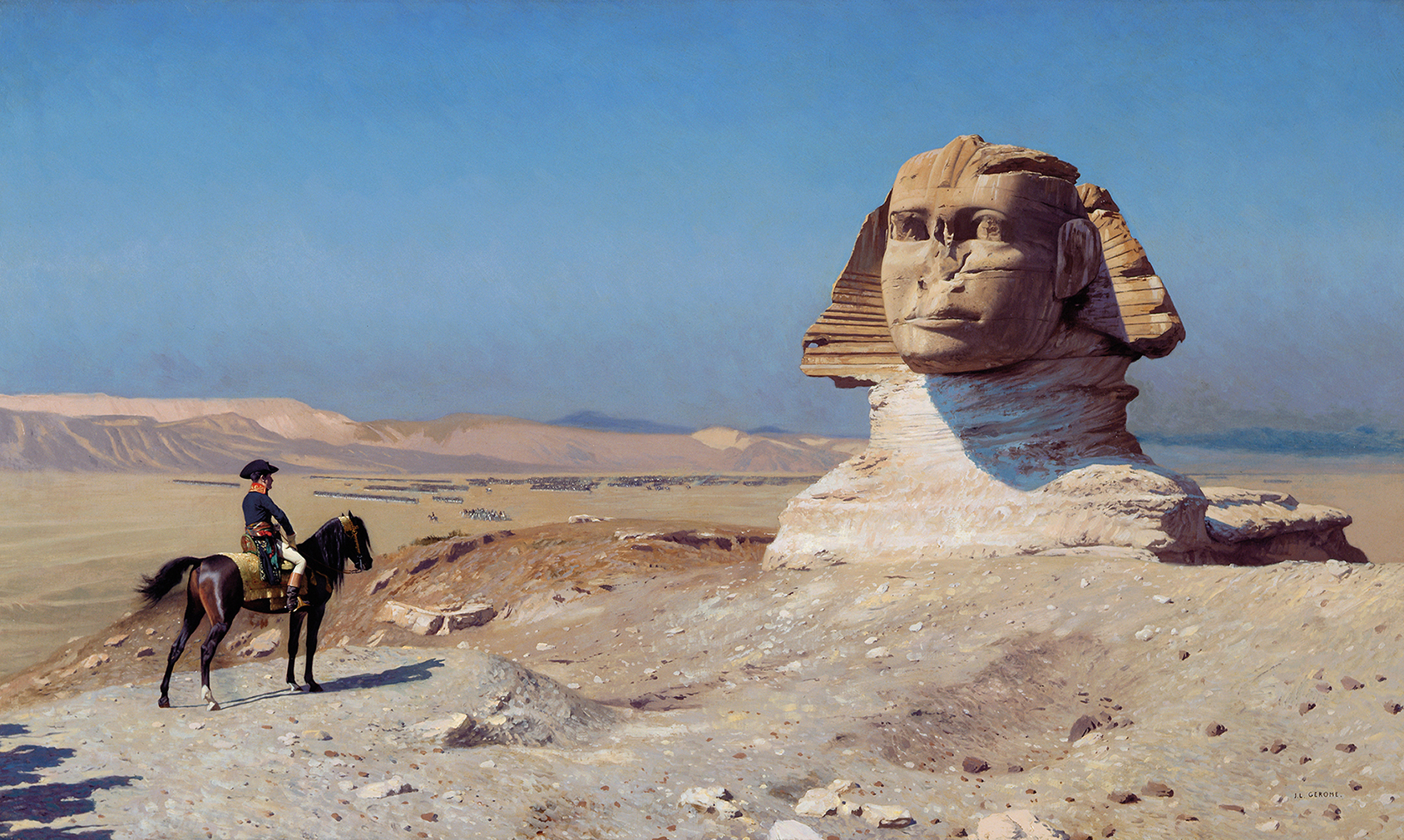
Pierre-François Bouchard was an engineer. He was in the French army. He joined the army in 1794 when he was 22 years old. The following year, he went to college. He studied math and science. He was a very good student. He left school to join a special force in the French army. He was sent to Egypt.
Pierre-François left France in 1798. This was less than a month after he got married. It wasn’t easy leaving his new wife. But Pierre-François was eager to explore Egypt.
A general named Napoleon Bonaparte ruled France at this time. His army took control of many parts of Europe and Africa. This included Egypt.
Nearly 2,000 years earlier, the Greeks took control of Egypt. Alexander the Great led them. The Greeks couldn’t read Egyptian writing. The Greeks couldn’t speak Egyptian, either. This caused problems.
Egyptian writing is called hieroglyphics. Hieroglyphics use simple pictures called glyphs. The glyphs stand for different words. To read hieroglyphics, you must know the meaning of each glyph. The writing you are reading right now uses letters to form words. The letters come from an alphabet. Each letter makes a sound. You can put different letters together to form words. The letters form the sounds of the words we speak. The Greeks used an alphabet to write, too.
Greek rulers began to lose control over parts of Egypt. Not all Egyptians knew the Greek laws. One Greek ruler posted the laws in important towns. Back then, they didn’t just pin up posters. They wrote the laws in stone. They had to make sure everyone understood the laws. So they wrote the laws in Greek and in hieroglyphics.
Over the next 2,000 years, different countries fought to rule Egypt. A lot was forgotten over the course of 2,000 years. People eventually forgot how to read hieroglyphics. Soon, the meaning of Egyptian hieroglyphics became a mystery lost to the ages.
When Napoleon conquered Egypt, he sent some of the brightest engineers and scientists—like Pierre-François—to study stuff from ancient Egyptian. Pierre-François traveled with a group of other scientists and engineers. They arrived in the city of Rosetta in 1799. On a tour of the harbor, Pierre-François found a unique stone. The stone had writing on it in three different languages. One was Greek and the other was Egyptian hieroglyphics. Pierre-François knew that Ancient Greeks often posted the same message in several languages. If both the Greek and hieroglyphics had the same message, then this stone could be used to learn the long-lost meaning of hieroglyphics. Pierre-François knew this stone from Rosetta was important. The stone was shipped back to Europe where experts could study it.
The stone became known as the Rosetta Stone. There were three forms of writing on it. It had hieroglyphics, demotic, and Greek. Demotic was a mix of hieroglyphics and alphabet-based writing.
Europe was buzzing with the Rosetta Stone discovery. Scholars knew that the stone held the key to understanding and reading hieroglyphics.
It took many years, but finally someone was able to crack the code. The Rosetta Stone proved to be the key. Jean-François Champollion used it and was the first to crack the code in 1822. The world was never the same since. In the years that followed, scholars flocked to Egypt. They wanted to learn all they could about Ancient Egyptian life. Now that they could read hieroglyphics, they could learn a lot more than before. Most of what we know today about Ancient Egypt is thanks to Pierre-François Bouchard’s discovery in 1799.



 About BeeLine
About BeeLine